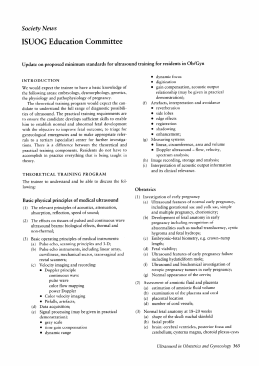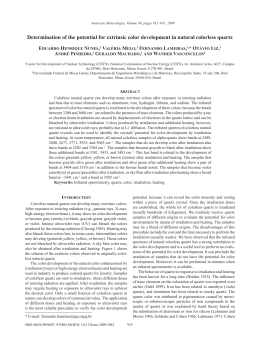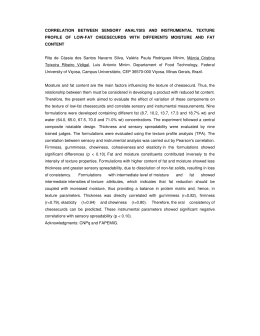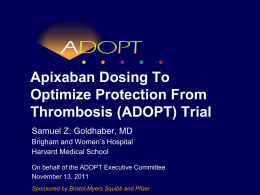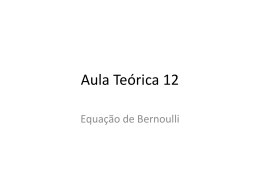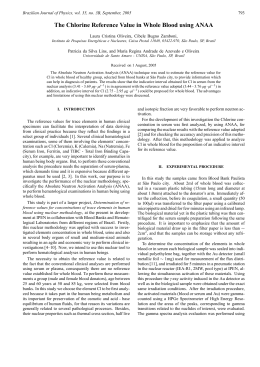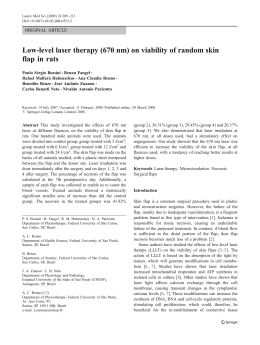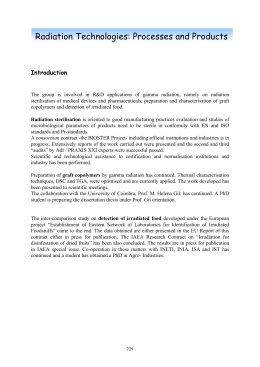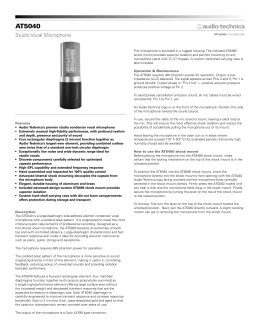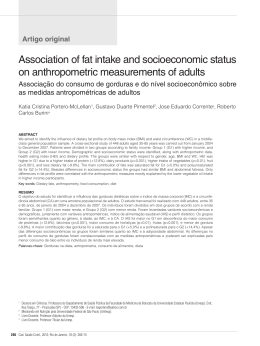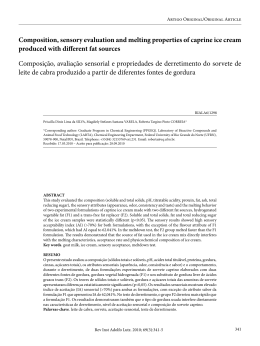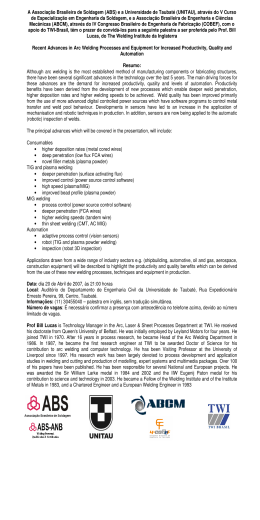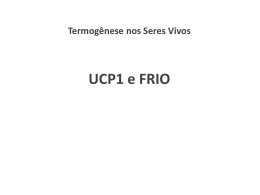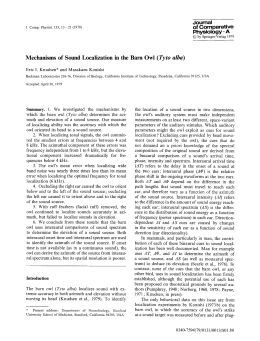Pathophysiology 9 (2002) 13 /19 www.elsevier.com/locate/pathophys Effect of ultrasound application on fat mobilization Hirohide Miwa a, Masato Kino a, Li-Kun Han b, Kunihiro Takaoka c, Takahiro Tsujita c, Hiroshi Furuhata d, Masahiro Sugiyama e, Hiromasa Seno f, Yusuke Morita f, Yoshiyuki Kimura g, Hiromichi Okuda b,* a Miwa Science Laboratory Inc., 6-7-10 Miyazaki, Miyamae-ku, Kawasaki, Kanagawa 216-0033, Japan Faculty of Environmental and Symbiotic Sciences, Prefectural University of Kumamoto,Tsukide 3-1-100, Kumamoto 862 /8502, Japan c Central Research Laboratory, School of Medicine, Ehime University, Shigenobu-cho, Onsen-gun, Ehime 791-0295, Japan d Medical Electronics Laboratory, Jikei Medical College, Minato-ku, Nishishinbashi, Tokyo 105-8461, Japan e Laboratory of Exercise Physiology, Faculty of Education, Ehime University, Bunkyou-cho, Matsuyama, Ehime 790-0855, Japan f Department of Physiology, School of Medicine, Tokushima University, Kuramoto-cho, Tokushima 770-8503, Japan g Second Department of Medical Biochemistry, School of Medicine, Ehime University, Shigenobu-cho, Onsen-gun, Ehime 791-0295, Japan b Received 25 December 2000; received in revised form 22 February 2001; accepted 8 March 2001 Abstract The aim of this experimental trial was to study the effect of ultrasound application on the lipolysis in adipose tissue. Rats were administered to pentobarbital (Nembutal) anesthesia and their abdomens were shaved. Rat abdomen was subjected to 24 kHz /1 MHz ultrasound for 10 min to investigate frequency and power-intensity dependency for fat mobilization. Blood was taken from the tail vein to estimate plasma free fatty acids (FFA). For frequency dependency two regions around 100 kHz and 300 /500 kHz were effective for fat mobilization. For power-intensity dependency, effective regions were found to be from 24 to 1090 kHz. In the effective regions on frequency and power-intensity, application of ultrasound caused increases in plasma FFA and norepinephrine concentration of extra-cellular fluid of perirenal adipose tissue. These results suggest that ultrasound application stimulates fat mobilization through a local increase in norepinephrine secretion under the conditions of effective frequency and intensity. # 2002 Elsevier Science Ireland Ltd. All rights reserved. Keywords: Ultrasound frequency; Power-intensity; Fat mobilization 1. Introduction It is well known that obesity predisposes to the development of chronic illness such as non-insulin dependent diabetes mellitus (NIDDM), hypertension, hyperlipidemia, coronary heart diseases and arteriosclerosis. Tokunaga et al. [1] classified obesity into two type, a visceral type and a subcutaneous type, using computed tomography (CT). They measured areas of visceral fat tissue and subcutaneous fat tissue on an axial CT section at the level of the umbilicus and calculated the ratio of visceral fat area to subcutaneous fat area. Recently, Tadokoro et al. [2] reported that the amount * Corresponding author. Tel.: /81-96-383-2929; fax: /81-96-3846765 E-mail addresses: [email protected]; [email protected]. (H. Okuda). of visceral and subcutaneous fatty tissues of obese subjects was measured using ultrasonography, and that preperitoneal and subcutaneous fat thickness had positive correlations with serum total cholesterol and LDL-cholesterol and a negative correlation with serum HDL-cholesterol. Total body multi-slices magnetic resonance imaging (MRI) also gives valid estimates of the amount and distribution of body fat [3]. Thus, CT, MRI and ultrasonography are used as the non-invasive diagnosis of obesity. There are a number of reports that the development of obesity is prevented by the inhibition of dietary fat absorption from small intestine, the enhancement of lipolysis in adipose tissue and exercise etc. [4 /7]. We previously reported that chitin-chitosan [6], caffeine and saponins of oolong tea [7] and saponins of Platycodi radix [8] prevented the high-fat diet-induced obesity mice through the inhibition of dietary fat absorption from small intestine and the enhancement 0928-4680/02/$ - see front matter # 2002 Elsevier Science Ireland Ltd. All rights reserved. PII: S 0 9 2 8 - 4 6 8 0 ( 0 2 ) 0 0 0 1 7 - 2 14 H. Miwa et al. / Pathophysiology 9 (2002) 13 /19 of norepinephrine-induced lipolysis in fat cells. The application of ultrasound machine is mainly used as the diagnostic machine, but it has not been used as therapeutic machine for obesity. It is well known that catecholamines such as epinephrine and norepinephrine stimulate lipolysis in fat cells. Thus, hydrolysis of triglyceride in fat cells and the successive fat mobilization stimulated by catecholamines are essential for reduction of stored triglyceride in adipose tissues, and consequently obesity should be improved. Therefore, we speculate that application of ultrasound stimulates lipolysis in adipose tissue through increase in secretion of norepinephrine from sympathetic nerve and the part irradiated by ultrasound frequency may be caused lipolysis, and consequently the irradiated part of body may be thinned. To clarify whether or not irradiation of ultrasound to rat abdominal area caused fat mobilization, we examine the changes of plasma Free Fatty Acids (FFA), epinephrine and norepinephrine, and the secretions of norepinephrine from sympathetic nerve in peripheral adipose tissues after ultrasound irradiation under the various conditions (bathing at 36 8C water of rat and irradiation of various ultrasound frequency). 2. Materials and methods 2.1. Animals Young male Crj: Wistar rats, weighing between 175 and 260 g, were given a standard laboratory diet (Oriental Yeast, Tokyo, Japan) and water ad libitum. They were cared for in the Laboratory Animal Center at Ehime University. In the experiments on ultrasound application (likewise throughout), rats were administered general anesthesia with nembutal and their abdominal hair was removed. NEFA C test kits purchased from Wako Pure Chemical Industries. (Osaka, Japan). Other chemicals were of reagent grade. Injections of pentobarbital sodium (Nembutal) was obtained from Dainippon Pharmacy Co. Ltd. (Osaka, Japan). 2.2. Conditions of ultrasound irradiation Specifications of the transducers are listed in Table 1. Sound field of a disc transducer extends a cylinder-like near-field and adjacent cone-like far-field. In the near field, the sound field is very locally irregular, and shows a speckle-like pattern of intensity distribution. In the far field, the sound field is uniform. Around the transition area from the near field to far field, sound intensity reaches maximum and is called as ‘Last maximum’. Its distance ‘R’ from the transducer (TD) is given by the following equation, and listed in Table 1. Rlast max: D2 4l D : a diameter of the transducer; l : a wave length All ultrasound application should be made in this far field, and the effective area of application should be greater than the abdominal area. The actual irradiation distance from the TD are also listed in Table 1. Ultrasound application was performed in a water bath measuring 750 mm (width) /450 mm (depth) /450 mm (height), and the inner wall side was covered with nonreflecting sheet (Fig. 1). Its reflecting coefficient at a 458 incident angle was 6/29% in 100 kHz /1 MHz and / 70% in 24/36 kHz. Furthermore, an oblique sound path arrangement to the wall and free water surface as shown in Fig. 1 was employed to eliminate error from interference with the reflected waves. Sound intensity was measured by a lead zircotitanate sound pressure sensor (0.5 /10 mm). Its output (in mv) is proportional to the square root of the power density or intensity: W/cm2. The proportional constant was determined by the total watt meter, the revised UPM-DT-1 (Ohmic Instruments Co, USA) of which assures the accuracy in frequency ranges over 100 kHz is guaranteed. A pressure distribution was measured at a distance in far field, and its readings are squared and integrated over the whole beam cross sectional area at the distance and compared with the measured total watt. Thus, the proportional constant was determined. Finally, a calibration curve between sensor reading (mv) and mW/cm2 was obtained in wide frequency range of 24 kHz-1 MHz and used throughout this experiment. However, the calibration in the range of 24 and 36 kHz might be ambiguous, because the accuracy of the Watt meter is not assured in these frequency ranges, and wall reflection still remains in the bath. 2.3. Determination of rat plasma FFA, epinephrine and norepinephrine after irradiation of various ultrasound frequency to rats Rats were washed with a detergent to allow for maximum contact of water and fur, and to remove air bubbles. Then the rat was inserted into a rat holder and immersed in 36 8C water which was previously boiled to expel air. Various ultrasound frequency shown in Table 1 was irradiated for 10 min. A 0.2 ml of blood were taken from the rat tail vein for estimation of plasma FFA before ultrasound application and 10 min after the end of the application. Plasma FFA was measured using NEFA C test kits. Moreover, whole blood was taken to estimate plasma epinephrine and norepinephrine from venus puncture of rats after ultrasound irradiation under various conditions, and then blood was chilled in ice-cold tube containing 200 mM EDTA solution (50 H. Miwa et al. / Pathophysiology 9 (2002) 13 /19 15 Table 1 Transducers (TD) and their specificatiosns TD frequency (kHz) Wave length TD type TD diameter (mm) (f ) Window diameter (mm) Meterial Thickness (mm) Last max (mm) Ultrasound application dist (mm) 24.1 62.5 L 45 60 s.s. 3 14 54 37.0 41.7 L 45 60 s.s. 3 23 64 91.1 14.5 L 15 60 s.s. 0.5 62 66 162.0 9.5 C 45 60 s.s. 3 95 104 311.1 4.8 C 50 60 C 130 160 411.5 3.6 C 50 60 C 174 200 517.0 2.9 C 50 60 C 216 250 616.5 2.4 C 50 60 C 260 275 723.0 2.1 C 50 60 C 298 300 820.0 1.8 C 50 60 C 347 350 1090.0 1.4 C 20 20 Ta. 71 256 L, langevin; C, ceramic; s.s. stainless steel, Ta., Tantalum. ml) and centrifuged at 4 8C to give plasma. The plasma (1 ml) was treated by adding 2.5% perchloric acid (PCA), and then the PCA-soluble fraction was analyzed using catecholamine analyzer (HLC-825CA, Toyosoza Industry Co. Ltd., Tokyo, Japan) and the contents of plasma epinephrine and norepinephrine were measured. collected dialysate was applied to the pre and analytical columns to determine the norepinephrine concentration. Microdialysate norepinephrine concentration was corrected for its dilution. Ultrasound was applied to the abdomen of rat for 10 min under the conditions of 517 kHz and 100 mW/cm2. 2.4. Determination of epinephrine and norepinephrine secreted from sympathetic nerve in peripheral adipose tissue using microdialysis procedure 2.5. Preliminary clinical study Microdialysis and norepinephrine determination in the dialysate were carried out with DAA 300 microdialysis-liquid chromatography with electrochemical detector (EICOM Ltd., Kyoto, Japan). For microdialysis, OP-100-01 probe was used. The polycarbonate dialysis membrane of this probe has a length of 10 min and a diameter of 0.2 mm. The microdialysis probe was inserted into left perirenal adipose tissue of rats under general anesthesia with nembutal through a guide cannula and continuously perfused with Ringer’s solution at a flow rate of 2 ml/min using ESP32 microinjection pump. Dialysate volume of 30 ml (sampling time 15 min) were collected in microvials. Ten microliter of the Thirteen adult men were divided into three groups and performed under the conditions as follows; A group (five men): 10 min irradiation of 1 MHz frequency and 10 min walking, B group (five men): 10 min irradiation of 500 kHz frequency and 10 min walking, and C group (three men): 10 min walking without irradiation of ultrasound frequency. Walking speed with a treadmill was determined to be 100 m/min. The irradiation and walking were performed once a day for 10 days. The site of ultrasound irradiation was the inner thigh of the right leg with the left side being used as the control side. After the period of walking and ultrasound irradiation, the subcutaneous fat thickness of right and left thighs were measured using ultrasonography (SSD 500B, Aloka Co., Tokyo, Japan) (Fig. 2). Fig. 1. Water bath for ultrasound application. 16 H. Miwa et al. / Pathophysiology 9 (2002) 13 /19 Fig. 2. Measurement of subcutaneous fat thickness of thigh in human. 2.6. Statistical analysis of data Values are expressed as mean9/standard deviation (S.D.). Student’s t-test was used to determine the significance of differences. A P value of B/0.05 was considered statistically significant. 3. Results 3.1. Effects of bathing in 36 8C water on the changes of plasma FFA level with or without ultrasound irradiation under pentobarbital-treated anesthetized rats Anesthetized rats with pentobarbital (Nembutal) (control groups) were bathed in 36 8C water for 10 min without ultrasound application. Plasma FFA levels of rats were slightly increased by bathing for 10 min (Fig. 3). It seems likely that the elevation of plasma FFA rats may be caused by stress during bathing at 36 8C for 10 min. However, irradiation of ultrasound frequency (500 kHz and 100 mW/cm2) in bathing rats was increased plasma FFA more than those of bathing rats (Fig. 3). 3.2. Effects of various frequency or intensity of ultrasound on the changes of plasma FFA level under pentobarbital-treated anesthetized rats As shown in Figs. 4 and 5, the increases of ultrasound frequency (kHz) and intensity (mW/cm2) significantly caused the elevations of plasma FFA in ultrasound irradiated-rats, ultrasound frequent- or intensive-dependently. Maximum level for ultrasound irradiation used in this study was confined under 1 W/cm2, which is the Fig. 3. Effects of bathing in 36 8C water on the changes of plasma FFA level with or without ultrasound irradiation under Nembutaltreated anesthetized rats. k, Control group (bathing). m, Ultrasound irradiation (526 kHz 110 mW/cm2). *, P B/0.05, vs. control group. maximum level for ultrasound diagnosis recommended by WFUMB and FDA of the USA, even though a higher level than 1 W/cm2 can be used for treatment of ill patients under strict administration by a medical doctor. From these results, the irradiation of 300/500 kHz of ultrasound frequency and 100 /500 mW/cm2 of ultrasound intensity was selected and used. Next, we examined the effects of ultrasound irradiation with the above conditions on the changes of rat plasma catecholamine levels after ultrasound irradiation for 10 min. The levels of plasma epinephrine and norepinephrine had no effect after ultrasound irradiation to rats (data not shown). Ultrasound frequency irradiation at 500 KHz and 100 mW/cm2 was reached at 320 mm deep and permeated through rat body. However, liver and kidney injuries and hemolysis did not cause under this condition from the results of biochemical analysis of rat blood (data not shown). In addition, when adipose and muscle tissues isolated from rat were directly irradiated by the ultrasound frequency at 500 KHz and 100 mW/cm2, the release of lactate dehydrogenase (LDH) was not caused, (data not shown). These results suggest that the irradiation of ultrasound frequency at 500 KHz and 100 mW/ cm2 did not cause the destruction of adipose and muscle tissues. H. Miwa et al. / Pathophysiology 9 (2002) 13 /19 Fig. 4. Effects of various frequency or intensity of ultrasound irradiation on the changes of plasma FFA level under Nembutaltreated anesthetized rats. 1, 160 kHz 130 mW/cm2; 2, 311.1 kHz 225 mW/cm2; 3, 411.5kHz 110 mW/cm2; 4, 526 kHz 110 mW/cm2; 5, 616.5 kHz 100 mW/cm2; 6, 836 kHz 200 mW/cm2; 7, 1090 kHz 125 mW/cm2; *, P B/0.05, vs. control group. 3.3. Effects of ultrasound irradiation on catecholamine secretion from sympathetic neuroterminal around white adipose tissues of rats by microdialysis As shown in Fig. 6, ultrasound irradiation in each condition significantly caused about two fold increase in the norepinephrine concentration in the dialysate, which corresponded to the extracellular fluid of the perirenal adipose tissue. Significant increase in the norepinephrine was found after ultrasound irradiation as compared with the norepinephrine concentration before irradiation. Epinephrine concentration of the dialysate did not change before and after ultrasound irradiation. (data not shown). 3.4. Effects of the combination of ultrasound irradiation and exercise on fat thickness of leg in humans After exercise for 10 days, the fat thickness of nonirradiated left leg was not changed as compared with that of before exercise. On the other hand, the fat 17 Fig. 5. Effects of intensity of ultrasound irradiation at 500 kHz on the chages of plasma FFA level under Nembutal-treated anesthetized rats. *, P B/0.05, vs. control group. thickness of ultrasound irradiated right leg was reduced by the combination of exercise for 10 days and ultrasound irradiation for 10 min with 500 kHz or 1 MHz at 500 mW/cm2, as compared with control leg (nonirradiation right leg) (Table 2). The changes of body weight, plasma triglyceride, cholesterol, FFA, catecholamine, GOT and GPT before and after exercise and ultrasound irradiation, were not found (data not shown). 4. Discussion Recently, It has been reported that the amount of visceral and subcutaneous fat tissues of obese subjects was measured using ultrasonography [2]. However, the application of ultrasound machine were not developed yet as therapeutic machine for obesity. It is well known that catecholamines such as epinephrine and norepinephrine stimulate lipolysis in fat cells. Therefore, it seems likely that the irradiation of ultrasound may cause fat mobilization, and consequently the fat tissue may be reduced. In the present study, firstly we examined the effects of various conditions of ultrasound frequency and intensity on the changes of plasma FFA in 18 H. Miwa et al. / Pathophysiology 9 (2002) 13 /19 Based on these results, next, we examined the effects of the combination of ultrasound irradiation and exercise on the subcutaneous fat thickness of thighs in human. Adult men were divided into three groups; [group A] 10 min irradiation of 1 MHz frequency and 10 min walking, [group B] 10 min irradiation of 500 kHz frequency and 10 min walking, and [group C] 10 min walking without ultrasound irradiation. The irradiation and walking were carried out once a day for 10 days. The site of ultrasound irradiation was the inner thigh of the right leg with the left side being used as control side. We found that the subcutaneous fat thickness of the irradiated (right) thighs significantly decreased compared with that of the non-irradiated (left) thighs after irradiation (Table 2). Body weight between before and after exercise and ultrasound irradiation was not changed (data not shown). Experiments are now in progress to increase the clinical experimental data and to clarify the mechanism of ultrasound irradiation-induced secretion of norepinephrine from the sympathetic nerves. Fig. 6. Effects of ultrasonic irradiation on norepinephrine concentration in extracellular fluid of rat perirenal adipose tissue. Ultrasound irradiated at 517 kHz and 100 mW/mc2. *, P B/0.05, vs. before irradiation. Table 2 Comparision of the difference of subcutaneous fat thickness in ultasound irradiated legs with that of non-irradiated legs Ultrasound irradiation Mean difference (mm)a Control (non-irradiated left leg) 500 kHz 500 mW/cm2 1 M kHz 500 mW/cm2 0.3690.51 2.0290.51b 2.7990.85b a The mean difference of fat thickness of legs was determined by the differences before and after the exericse with or without ultrasound irradiation. Values are expressed as mean9S.D. b P B 0.05, vs. control group. Acknowledgements Authors sincerely thanks to Sigemasa Hosoki, President and Sumi Ikemoto, Adviser of Nido International Co. Ltd. for the financial support in early stage and another corporation for the financial support in later stage. Authors also appreciate Toshiaki Miyamoto, executive director, and Hideo Kohsaka, Honda Electronics Co. Ltd. for developing specific ultrasound equipment. Thanks are also given to Dr Atsuko Sasaki, Department of Preventive Medicine, Jikei University, School of Medicine, and Dr Tetsuo Shuu, President of Tokyo Obesity Research Lab. for valuable suggestions and discussions. References ultrasound-irradiated rats. After ultrasound was applied to rat abdomen, the plasma FFA was increased by intensity below 1 W/cm2 and frequency of 100 and/or 300 /500 kHz (Figs. 3/5). When, in vitro, ultrasound was applied to the epididymal adipose tissue or fat cells from rat, no fat mobilization was observed at any intensity (data not shown). Moreover, ultrasound irradiation was proved to increase significantly norepinephrine concentration of the dialysate which corresponded to extracellular fluid of the perirenal adipose tissue (Fig. 6). These results suggest that ultrasound irradiation induces fat mobilization through increase in norepinephrine secretion from sympathetic nerves in the white adipose tissue. [1] K. Tokunaga, Y. Matsuzawa, K. Ishikawa, S. Tarui, Anovel technique for the determination of fat by computed tomography, Int. J. Obes. 7 (1983) 437 /445. [2] N. Tadokora, S. Murano, T. Nishide, R. Suzuki, S. Watanabe, H. Murayama, N. Morisaki, Y. Saito, Preperitoneal fat thickness determined by ultrasonography is correlated with coronary stenosis and lipid disorders in non-obese male subjects, Int. J. Obes. 224 (2000) 502 /507. [3] L. Busetto, A. Tregnaghi, M. Bussolotto, G. Sergi, P. Benicà, A. Ceccon, V. Giantin, D. Fiore, G. Enzi, Visceral fat loss evaluated by total body magnetic resonance imaging in obese women operated with laparascopic adjustable silicone gastric banding, Int. J. Obes. 24 (2000) 60 /69. [4] T. Abe, T. Sakurai, J. Kurata, Y. Kawakami, T. Fukunaga, Subcutaneous and visceral fat distribution and daily physical activity: comparison between young and middle aged women, Br. J. Sprts. Med. 30 (1996) 297 /300. H. Miwa et al. / Pathophysiology 9 (2002) 13 /19 [5] M.K. Wendy, M.T. Kohrt, G.P. Malley, P.D. Gail, O.H. Jophn, Body composition of healthy sedentary and trained, young and older men and women, Med. Sci. Sports Exerc. 24 (1992) 832 /837. [6] L.-K. Han, Y. Kimura, H. Okuda, Reduction in fat storage during chitin-chitosan treatment in mice fed a high-fat diet, Int. J. Obes. 23 (1999) 174 /179. 19 [7] L.-K. Han, T. Takaku, J. Li, Y. Kimura, H. Okuda, Anti-obesity action of oolong tea, Int. J. Obes. 23 (1999) 98 /105. [8] L.-K. Han, B.-J. Xu, Y. Kimura, Y.-N. Zheng, H. Okuda, Platycodi radix affects lipid metabolism in mice with high fat diet-induced obesity, J. Nutr. 130 (2000) 2760 /2764.
Download
